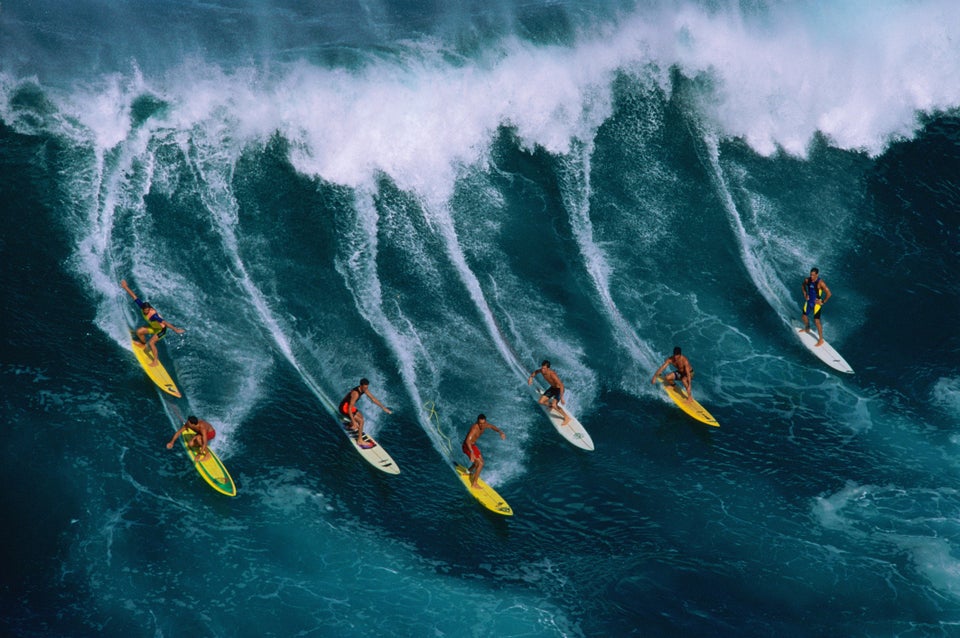The World Surf League announced Tuesday that it will acquire a majority stake in the Kelly Slater Wave Company (KWSC) for an undisclosed sum -- officially cementing the fact that surfing as we know it will never be the same again.
Let's rewind.
Just five months ago, Kelly Slater unleashed footage of himself surfing a mind-blowing artificial wave that he and a team of engineers developed over the course of a decade. Wave pools have been around for awhile, but this was the first time the world saw one pumping out perfectly consistent barrels rivaling nature's best.
Then, in early May, Slater christened the wave by inviting surf royalty -- including two women's world champs, pro surfer Nat Young and a few WSL executives -- to experience his creation first hand. Their euphoric reactions said it all: Not only does this wave look good, it rides like the real deal -- if not better.
Now that WSL Holdings, the parent company of the WSL, is backing Slater's "freak of technology," it could revolutionize the sport entirely, make surfing accessible to the masses and giving the entire industry a much-needed boost.
Slater's company is already at work "creating world-class, high-performance training centers," which means that pro surfers won't have to travel the globe and wait on swells just to practice their skills.
And while there are no official plans to include an artificial wave on the world tour just yet, WSL CEO Paul Speaker is already envisioning what the future of championship events will look like with one.
"We do believe that all stakeholders -- athletes, fans, broadcast and corporate partners -- will be super energized by the advent of Championship Tour-level competition with man-made waves," Speaker said in a release.
But two groups -- broadcasters and corporate partners -- clearly stand to benefit the most. Broadcasters will relish the fact that competitions would no longer be dependent on wave or swell conditions, making them more predictable and easier for live TV, while sponsors would enjoy reaching new markets and audiences that were, geographically speaking, cut off from surfing before.
"TV partners are going to be able to -- for the first time -- turn us on and off live at 1 o'clock on Sunday afternoon," Speaker, a former NFL exec, told Surfline.
The acquisition also sets WSL up to "bring surfing to regions of the country and the world that may not be near a coastline, introducing millions of new fans to the sport," Patty Smith, WSL's senior vice president, told The Huffington Post. "It's early days yet, but we are excited about the possibilities."
The surfers, of course, also stand to benefit from the increased exposure. If, for instance, the WSL can successfully introduce artificial waves into championship events, it could be the component officials need to finally include surfing in the Olympics.
But many surf purists are still skeptical about divorcing the sport from nature, saying that the connection to the ocean is an integral aspect of the sport's unique culture. Sensitive to the criticism, Slater contends that his creation was never meant to replace surfing in the ocean, only augment it.
"I'm finding that the soulfulness of surfing a repeatable, man-made wave is whatever you bring to it," Slater wrote on Instagram last week. "It's in the experience and mindset and attitude ... When the wave is as good as the last one that broke, you simply don't care which one is yours and which one is someone else's. It's a truly unique (and may I say spiritual?) feeling."
Now his waves could give everyone the chance to experience that feeling. Below, watch "Today" host Natalie Morales experience the euphoria of catching a wave, courtesy of Slater himself:
This story has been corrected to show that Paul Speaker is the CEO of WSL, not the president.

